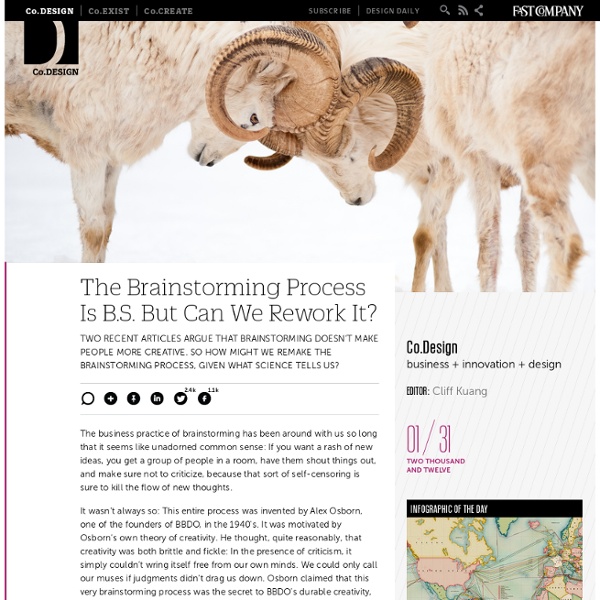The Brainstorming Process Is B.S. But Can We Rework It?

Rick Boersma: Saturday afternoon inking...
Rick Boersma: Ch 6 p7 #innovation inked...
Rick Boersma: Perseverance, the main tal...
Rick Boersma: #innovation applied to hot...
Rick Boersma: #innovation thru 1-step st...
Rick Boersma: Random related #innovatio...
Rick Boersma: Another page of #innovatio...
Rick Boersma: Back to p1 of ch6 of #inno...
Rick Boersma: Ch 6 p2, #innovation in a...
Front End of Innovation Group News
Rick Boersma: ...and another #innovation...
Rick Boersma: Sat morning rough-drafting...
The Making of an Innovation Master - Scott Anthony
by Scott Anthony | 12:01 PM March 23, 2012 A workshop attendee asked me this seemingly simple question: “So, what else should I read to learn more about innovation?” It’s a hard question to answer because there is so much high-quality material out there. And specific recommendations depend on the specific topic about which you are most curious. But in thinking it through, I did eventually end up with a highly personal list I call “The Masters of Innovation” (which appears in my latest book). So what makes a Master? Do the individual’s ideas bring clarity to the quest of improving the predictability and productivity of innovation? These three questions lead to obviously biased selections. There were a ton of great thinkers that didn’t quite make the cut, such as Chip and Dan Heath, Geoffrey Moore, Constantinos Markides, Robert Burgelman, Henry Mintzberg, Gary Hamel, Michael Tushman, W. One natural question is, “Who is next?” 1. 2. 3. 4. 5. 6. 7.
Related:
Related:



